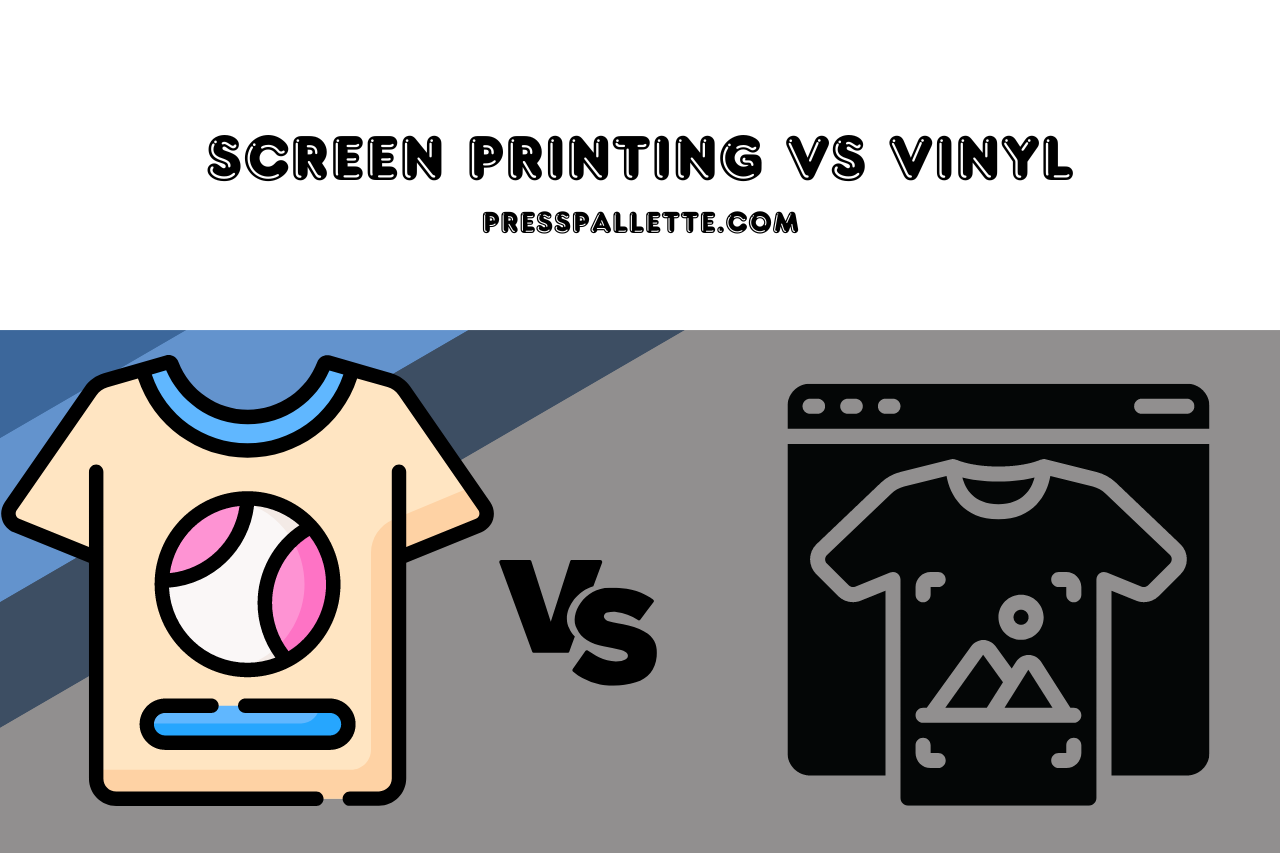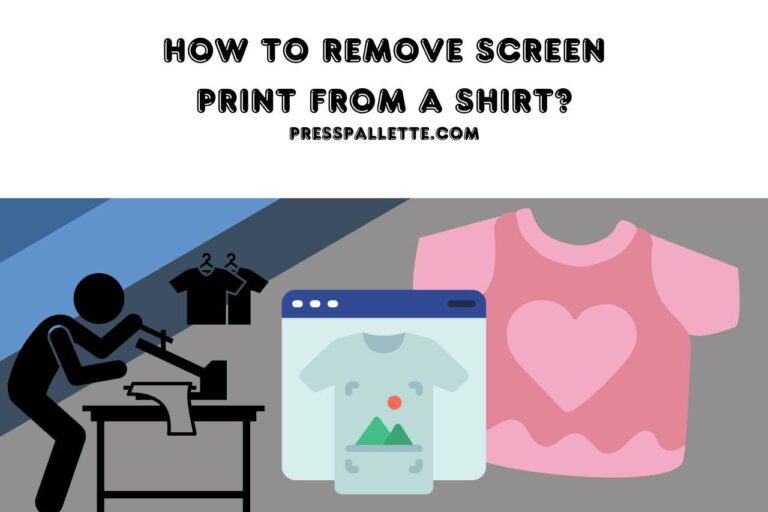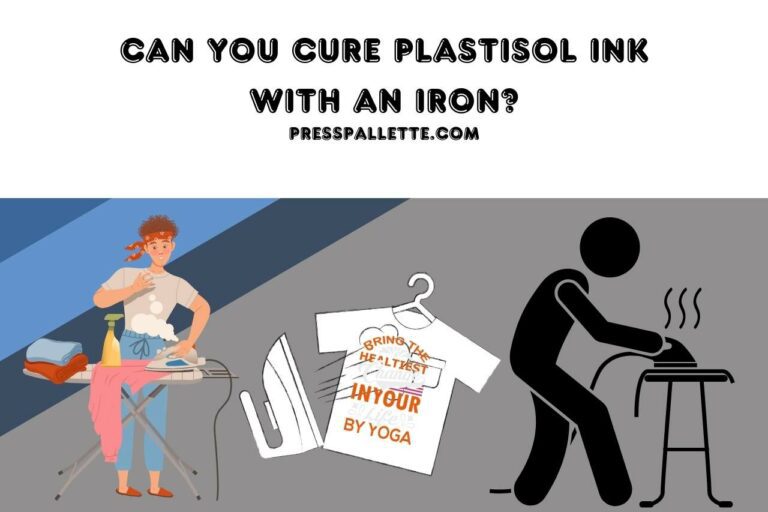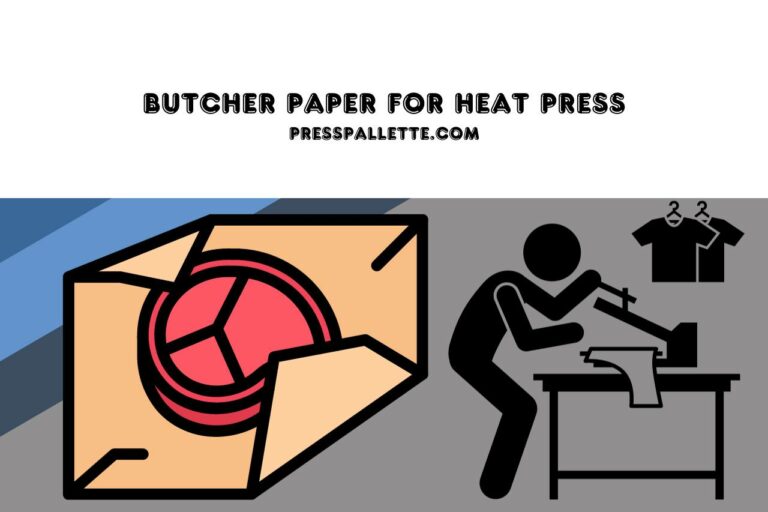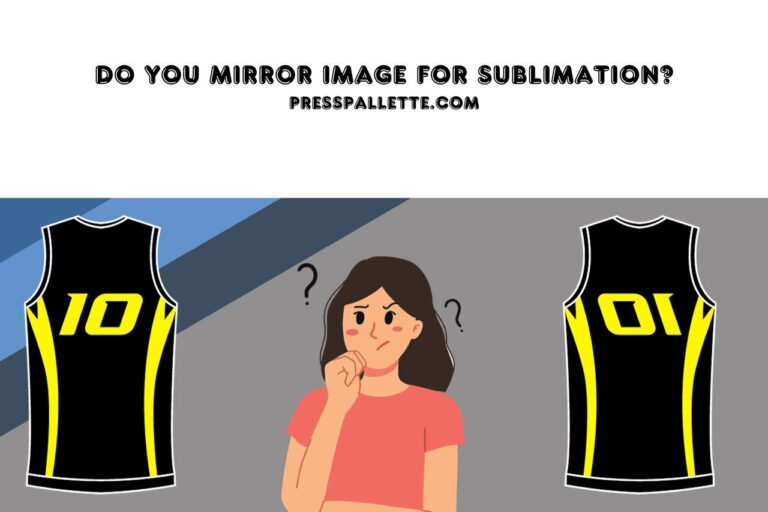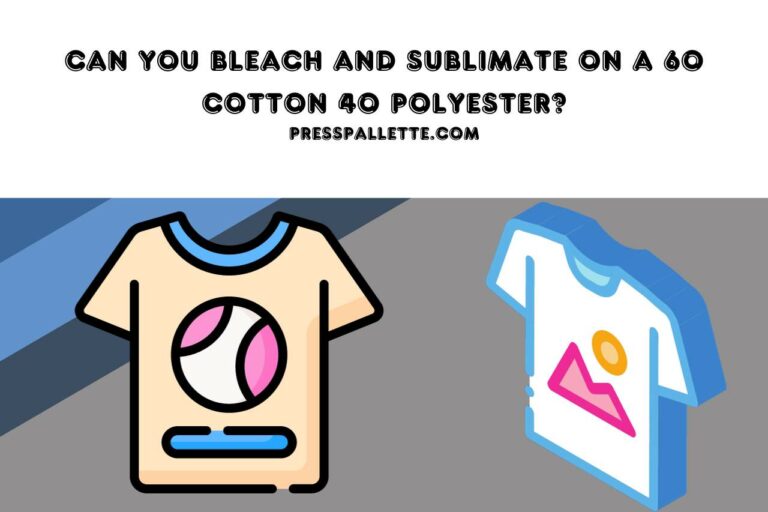Screen Printing vs Vinyl – (Comparing Screen Printing & Vinyl Printing)
It is not surprising that small company owners are embracing this trend given the recent surge in demand for personalized t-shirts along with additional clothing, but how do you determine which one is best for you? Two of the most often used techniques are screen as well as vinyl printing. You will learn more about “Screen printing vs vinyl” in this post.
Examine the benefits and drawbacks of vinyl and printing with screens for the creation of T-shirts. Find out which approach best fits your needs, limitations, and spending limit.
Screen Printing: What Is It?
Screen printing transfers your selected design to your clothing using screens (also known as stencils). For precise printing, each color in the graphic needs its own stencil.
Yet, since the ink only penetrates the stencil in the desired locations, it is simple to recreate your artwork. Given the number of hues your design requires, you will require numerous screens to get the desired effect. You may only use one color for every stencil.
Why Print on Vinyl?
The use of heat is the key to vinyl printing. To add color to an ordinary t-shirt, you heat-press colorful vinyl lettering and graphics that have been cut out using a machine. Both pressure and heat are combined to print on vinyl.
Vinyl thermal transfer is easier to set subject but takes longer to produce than screen printing. If you’re simply printing, 16 t-shirts and vinyl printing is more cost-effective. The efforts and time required to produce more than 16 t-shirts are excessive.
Screen Printing vs Vinyl
Durability
While screen prints are going to take longer, they both provide relatively good design permanence. HTV is the faster option. Since screen prints’ ink penetrates the fabric’s base, they often last longer than HTV prints, which dry on the fabric’s surface.
Quality
Excellent designs are offered on both screen printed and vinyl shirts. However, screen printed shirts often have a little edge.
You may use additional shades and any combinations of tints to generate vivid hues when you screen print clothes. Additionally, this style of printing leaves a super-high-quality, seemingly thick, raised coating of ink on the material being printed.
HTV, on the other hand, enables you to create pictures with focused, defined lines. Additionally, employing unique HTV types can provide intriguing textures.
Complexity
Compared to HTV shirts, screen printed shirts are much more flexible. This is so that each component of a vinyl pattern may be cut out individually.
A color photo is challenging to reproduce as a screen print. However, screen printing rather than HTV makes it easier to produce more intricate graphics.
Consistency
Creating an identical vinyl design repeatedly is far more difficult than it is to consistently reproduce screen-printed designs. This is due to the fact that whereas you are able to print dozens of shirts utilizing the same displays, vinyl printing requires you to manually assemble all of the HTV parts.
Cost-effectiveness
Vinyl is far more cost-effective for printing on a smaller scale, whereas screen printing tends to be more cost-effective for printing in volume.
Screen preparation for a single-screen print design takes a while. However, after putting in all of those hours, you may easily produce 100 shirts by reusing the screens 100 times. A series of 10 HTV shirts must all be made by going through identical laborious processes.
Fading
The first signs of cracking or fading in viny often appear after the 50th wash, but high-quality screen prints shouldn’t fade till the shirt has worn out.
Colorful Prints
Fewer colors are better for screen printing as well as HTV creates, while screen printing makes it easier to include multicolored patterns than HTV.
The conclusion is that the process of screen printing performs much better for multi-color printing than either vinyl or vinyl paint.
The Blending of Colors
Screen printing allows for color blending, whereas vinyl does not. Although two distinct pieces of vinyl cannot be used to mix colors, HTV may be purchased in almost any hue or tint conceivable.
Quantity
Larger production runs of screen-printed shirts and smaller runs of vinyl shirts are both preferable. Making the stenciled panels for a single print on screen requires a few hours. Vinyl designs, however, are ideal for only one or two shirts.
Best Material
Shirts made entirely of cotton are optimal for screen printing. However, polyester, as well as cotton, may both be decorated with vinyl.
Special Results
Screen printing may be used to produce unique effects by employing specialist inks, and vinyl can be used to produce effects by utilizing textured or distinctively colored strips of HTV. Nevertheless, the application of additional effects with vinyl is somewhat more frequent compared to screen printing.
Cost Per Shirt on Average
A screen-printed t-shirt often costs $20 to $30, but a vinyl shirt typically costs $10 for a ready-made item or $30 for a specially ordered one.
Given the level of detail of the artwork and the number of shirts purchased all at once, the printer’s cost might vary greatly. As you add increasingly shirts to every print operation, screen printing becomes more affordable per shirt. Vinyl is different since one must follow each shirt’s specific instructions.
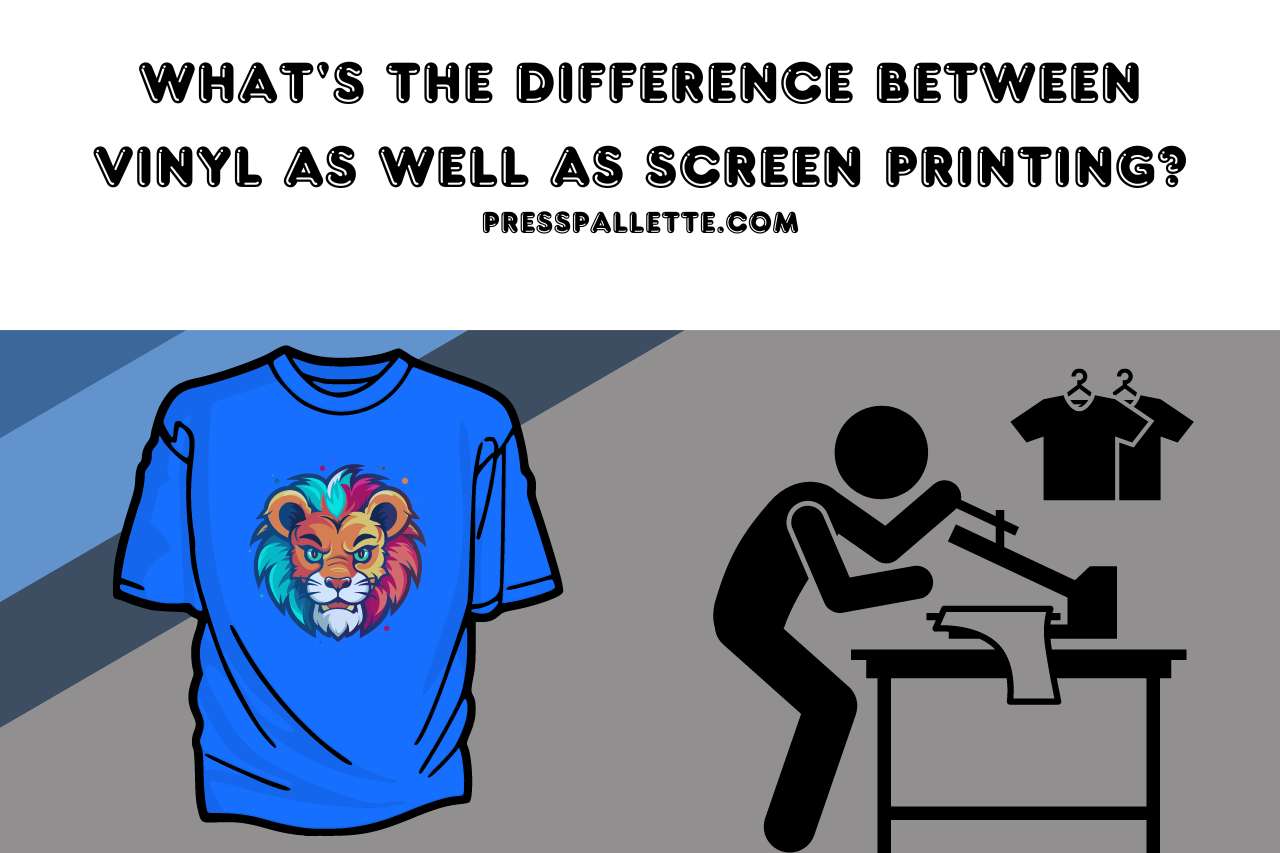
What’s the Difference Between Vinyl as Well as Screen Printing?
How big should the minimum runs be?
Printed Vinyl
The optimum time to use this method is if you simply need one to fifteen t-shirts to be made. Setting up takes far less time than screen printing. However, producing more than 16 T-shirts is going to be ineffective. Therefore you should only make a certain number.
Printing on a Screen
If you want to use a screen printing process, you will require the printing of at least 20–25 t-shirts. Due to its painstaking and exact nature, set-up takes significantly longer, yet once everything is complete, printing more t-shirts will be simpler.
Verdict
Are you planning to print plenty of T-shirts? The greatest option for you could then be printed on the screen. You may simply require a few t-shirts if you’re just getting started. Use the vinyl approach.
Think about my colors and details while designing a t-shirt.
Printing on Vinyl
Amazing monochromatic graphics that are simple and effective? Shirts with numbers or symbols on them? The vinyl method is on your side. It is simple to use and yields stunning patterns that will stick out.
Printing on a Screen
Complex patterns with minute details and sharp edges? The task may be completed using screen printing. In addition, you will be able to employ more colors than with the vinyl heat pressing.
Verdict
What will your design look like? Are you choosing simple designs in one or two colors? The vinyl will be better suitable for what you want. Screen printing, on the other hand, is more appropriate for your requirements if you want to make extremely intricate designs.
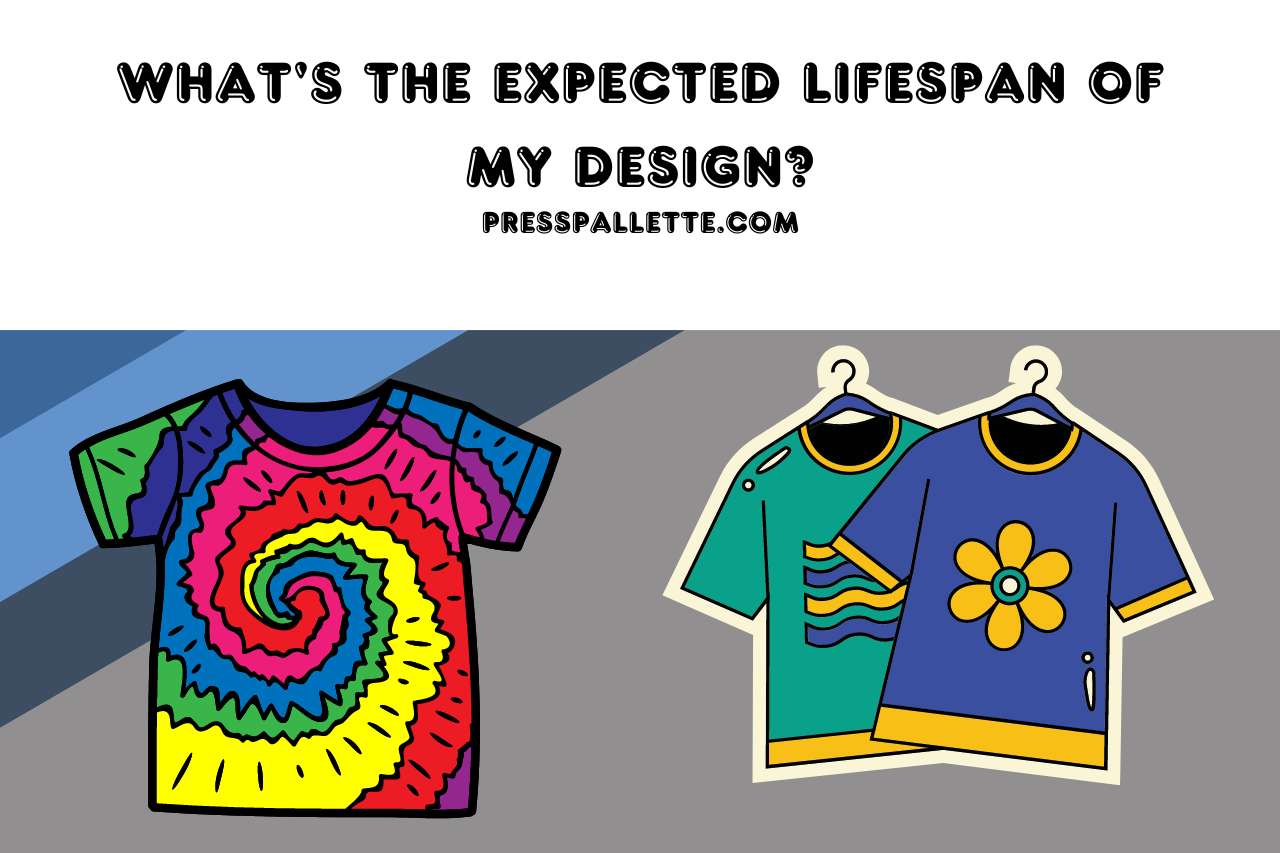
What’s the Expected Lifespan of My Design?
Printing on Vinyl
The design in the garment will remain intact for as many years as the garment itself does if you take good care of it. The t-shirt does require some maintenance.
Printing on a Screen
If you treat your digitally printed t-shirts with care, they should endure for the duration of the garment.
Verdict
Screen printing necessitates more cautious handling since you must remember that you should wash your digitally printed t-shirts in frigid temperatures. So you have a choice!
Watch this One,
Video Credits – DIY Alex
You May Also Like

